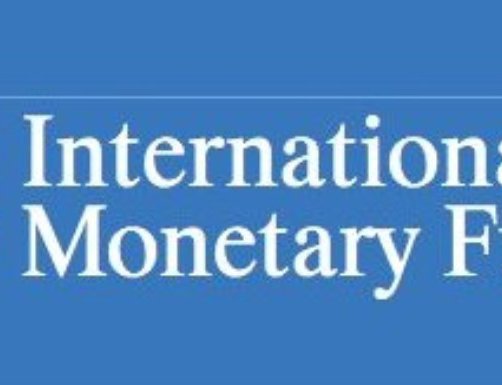
Nepal’s economy is rebounding following a slowdown caused by the 2015 earthquakes and trade disruptions at the southern border. Subsequent to the release of the April 2017 World Economic Outlook projections, which are reported in the Figures and Table at the back of this note, the authorities released national accounts data which estimate real GDP growth at market prices at 7.5 percent in 2016/17 (mid-July 2016 to mid-July 2017), supported by a good monsoon, accommodative monetary policy, and rising government spending.
This represents a sharp rebound from growth of only 0.4 percent in 2015/16. Shortages of fuel and other essential goods due to the trade disruption drove up inflation to 12 percent (y/y) in January 2016, but eased subsequently to 2.9 percent (y/y) in March 2017, due to favorable base effects after the end of the trade disruptions and lower food prices. Inflation is expected to undershoot the central bank’s mid-2017 target of 7.5 percent.
The general government balance was in surplus in 2015/16 as budget under-implementation worsened, particularly for capital spending. As a result, net public debt (gross public debt net of government deposits held at the central bank) fell to 22 percent of GDP, down from 34 percent of GDP in 2012. The 2016/17 budget envelope envisaged a near doubling of total spending compared to the 2015/16 outturn but this is unlikely to materialize. Staff projects an overall fiscal deficit of 1.6 percent of GDP in 2016/17, taking into account under-spending due to limited budget execution capacity.
Private sector credit growth rose to a 7-year high of 32 percent (y/y) in February 2017 before moderating somewhat to 28 percent (y/y) in March. The external South Asia Regional Update, May 2017 6 current account surplus reached 6.3 percent of GDP in 2015/16 as trade disruptions lowered imports. The growth rate of remittances slowed sharply, to 1 percent in 2015/16, from an annual average of 15 percent during the previous 5 years, due to weak growth in oilproducing host countries. Gross international reserves of the central bank reached a record US$8.8 billion (10 months of imports) in February 2017 Risks to the outlook are broadly balanced, with the main downside risks pertaining to domestic political instability and vulnerabilities in the banking sector.
The medium-term outlook critically depends on progress with reforms, in particular strengthening key institutions and administrative capacity to overcome the chronic under-performance of the budget; developing robust and sustainable intergovernmental fiscal arrangements for the impending move to a federal system; and improving the business climate to boost private investment. The rapid growth in credit underscores the need to tighten monetary policy and address financial sector risks through accelerating banking sector reforms.
According to a report, South Asia Regional Update, May 2017 South Asia: Continued Robust Growth The analysis and policy considerations expressed in this publication are those of IMF staff, and do not represent official IMF policy or the views of IMF Executive Directors or their national authorities. The outlook for South Asia’s economies remains strong.
After a slowdown in 2016, largely driven by lower growth in India following the country’s currency exchange initiative, South Asia’s real GDP growth is expected to pick up to 6.9 percent in 2017 and reach 7.3 percent in 2018. The dispersion of growth rates in the region is also declining and all countries are forecast to increase their rates of expansion. Despite a further strengthening of activity, South Asian inflation is expected to remain relatively stable. Addressing the region’s remaining macroeconomic vulnerabilities remains a work in progress.
Fiscal deficits and debt levels remain relatively high and are only expected to decline gradually. Vulnerabilities in the financial sector also require attention in several countries. Policymakers should focus on addressing the remaining vulnerabilities and supporting sustained high and socially inclusive growth. Some common areas of priority across the region include domestic revenue generation to support consolidation and generate space for more public investment and targeted social spending, as well as continued structural reforms to address supply-side bottlenecks and enhance the functioning of product and factor markets. Global and Regional Economy The global economy is gaining momentum. World economic growth is forecast to accelerate from 3.1 percent in 2016 to 3.5 percent in 2017 and reach 3.6 percent in 2018—a slight upward revision for 2017 compared with the October 2016 World Economic Outlook (WEO) forecast.
The pace of economic activity has strengthened in advanced economies, including the United States, as well as in some emerging market and developing economies. Market sentiment has been favorable. Asset price changes generally reflect both a more optimistic market environment, with stronger risk appetite, and shifting expectations regarding policy setting in major economies. In particular, markets expect a shift toward looser fiscal and tighter monetary policy in the United States.
The outlook for the Asia-Pacific region remains robust—the strongest in the world, in fact—and recent data point to a pickup in momentum. In particular, India and China are expected to be responsible for about half of global growth in 2017. Growth in the region is forecast to accelerate to 5.5 percent in 2017, up 0.2 percentage points from last year, as the region continues to be the leader of global growth. The IMF Asia-Pacific Department's May 2017 Regional Economic Outlook estimates Asian economic growth at 5.4 percent in 2018, citing accelerating growth in many major advanced and emerging economies as supporting Asia's positive outlook.
- TANAHU HYDROPOWER PROEJCT: A Significant Achievement
- Apr 15, 2024
- AMBASSADOR HANAN GODAR: Sharing Pain With A Nepali Family
- Mar 30, 2024
- VISIT OF KfW AND EIB TO NEPAL : Mission Matters
- Mar 25, 2024
- NEPAL BRITAIN SOCIETY: Pratima Pande's Leadership
- Mar 24, 2024
- NEPAL ARMY DAY: Time To Recall Glory
- Mar 15, 2024
















